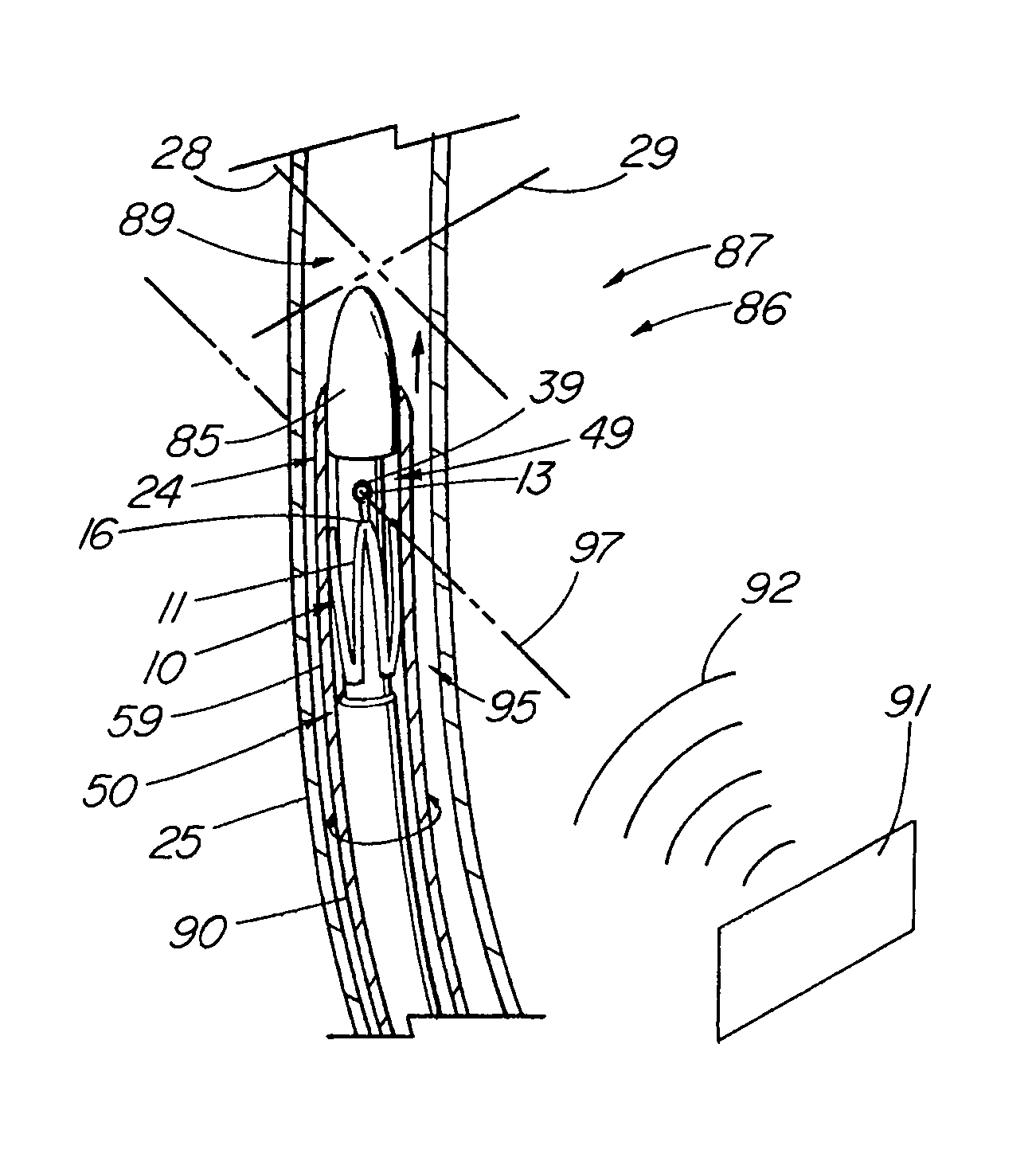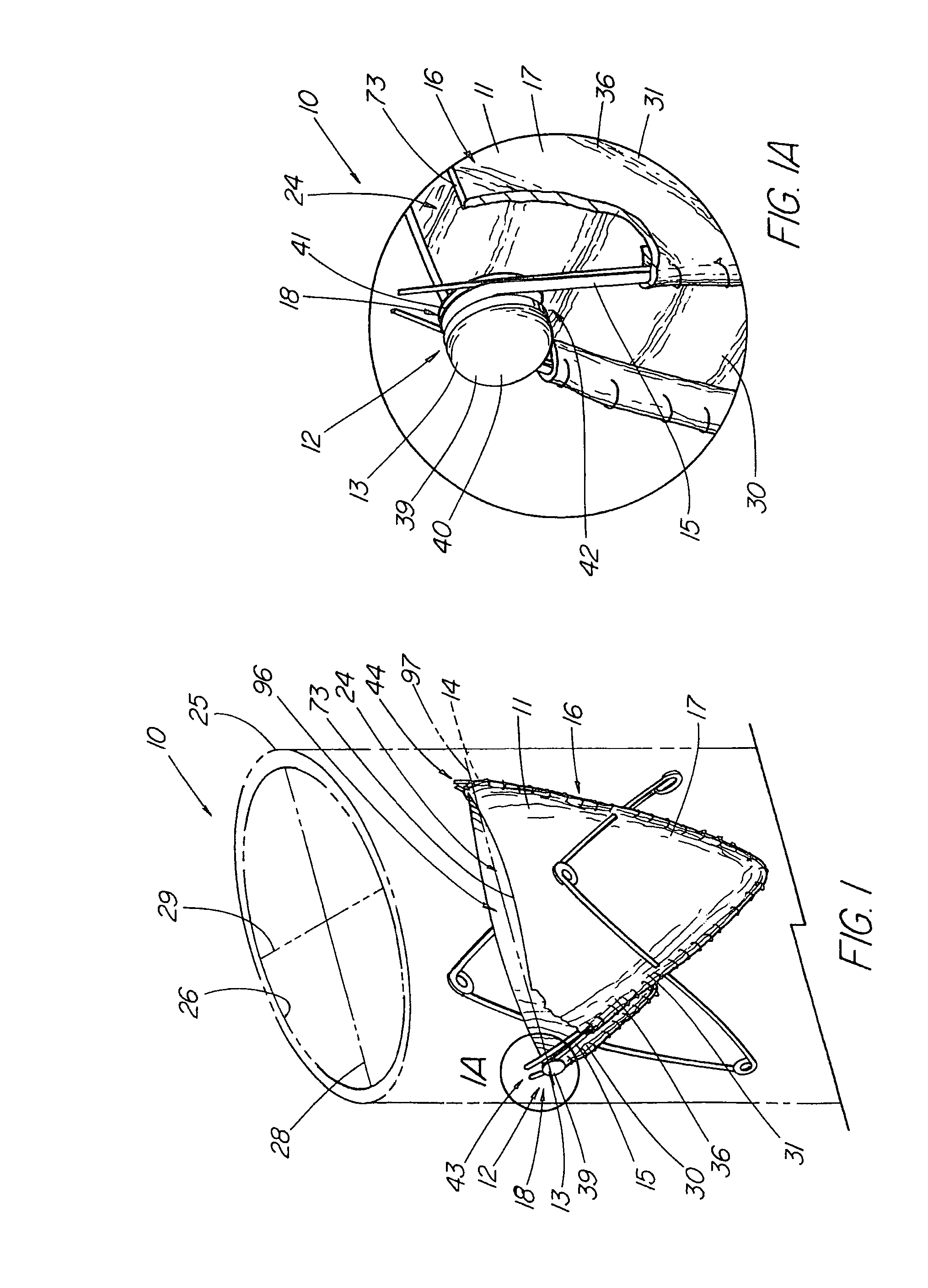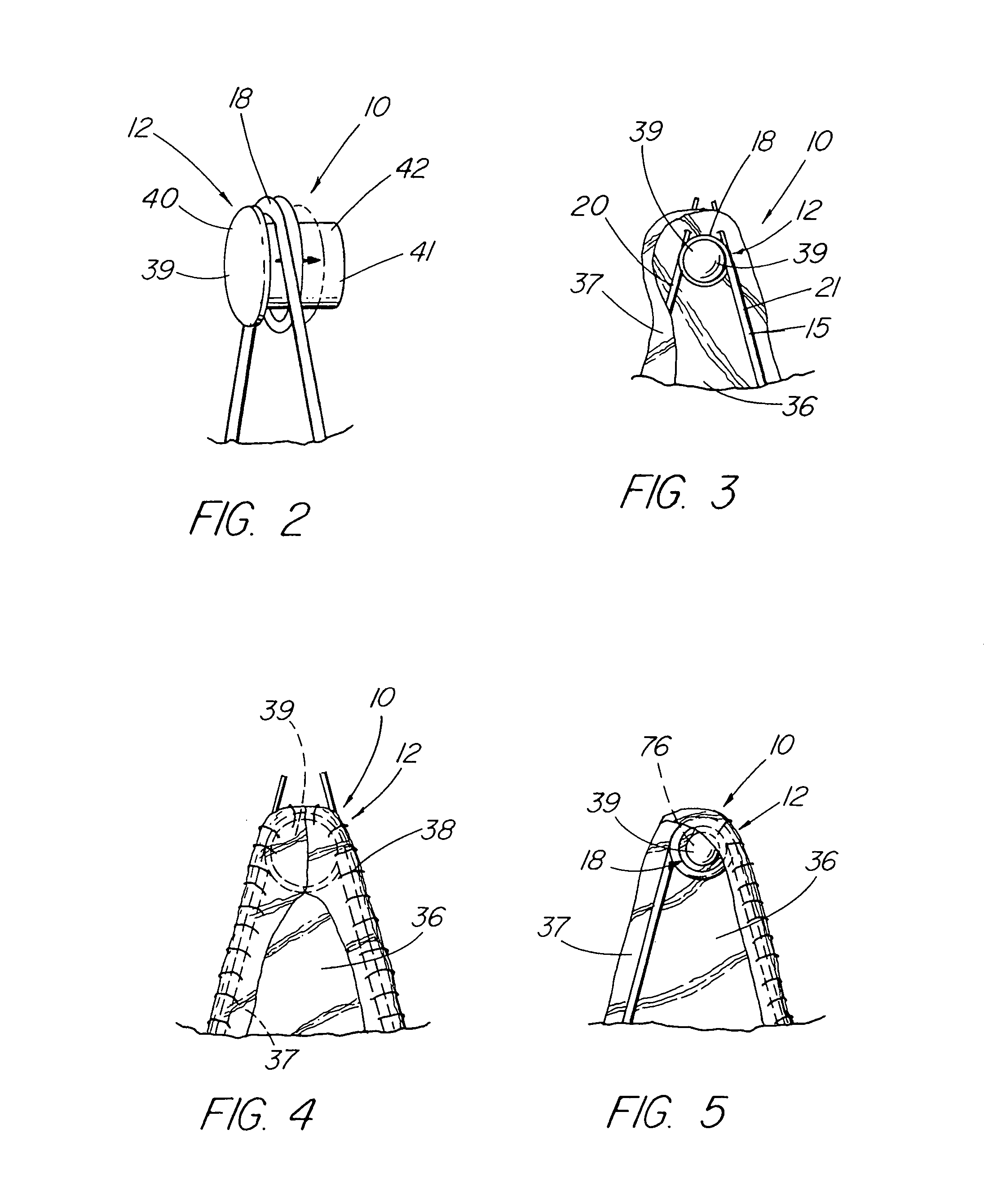Prosthesis adapted for placement under external imaging
a prosthesis and imaging technology, applied in the field of medical devices, can solve the problems of pain in the lower legs and feet, difficulty in fluoroscopy, and need for circumferential orientation, and achieve the effect of preventing errors
- Summary
- Abstract
- Description
- Claims
- Application Information
AI Technical Summary
Benefits of technology
Problems solved by technology
Method used
Image
Examples
Embodiment Construction
[0039]As embodied in FIGS. 1-23, the present invention is exemplified by an intraluminal prosthesis, typically of a generally tubular or cylindrical shape (cylindrical being defined to include flared or variable-diameter configurations), such as a expandable or self-expanding artificial valve 10, stent, stent graft, occluder, shunt, filter, or the like, that further comprises elements or structure that allows a clinician, using a selected means of external guidance, such as fluoroscopy, X-ray, ultrasound, M.R.I., etc., to readily identify the plane in which the prosthesis, or a particular portion thereof, lies prior to deployment within the patient and / or immediately thereafter. For example, to identify a structural feature 24,82, etc., disposed about a first axis 97 transecting the passageway 96 of the prosthesis, the imageable structure the imageable structure 12 or element is configured or positioned about the axis 97 to allow the clinician to adjust the position of the prosthesi...
PUM
 Login to View More
Login to View More Abstract
Description
Claims
Application Information
 Login to View More
Login to View More - R&D
- Intellectual Property
- Life Sciences
- Materials
- Tech Scout
- Unparalleled Data Quality
- Higher Quality Content
- 60% Fewer Hallucinations
Browse by: Latest US Patents, China's latest patents, Technical Efficacy Thesaurus, Application Domain, Technology Topic, Popular Technical Reports.
© 2025 PatSnap. All rights reserved.Legal|Privacy policy|Modern Slavery Act Transparency Statement|Sitemap|About US| Contact US: help@patsnap.com



